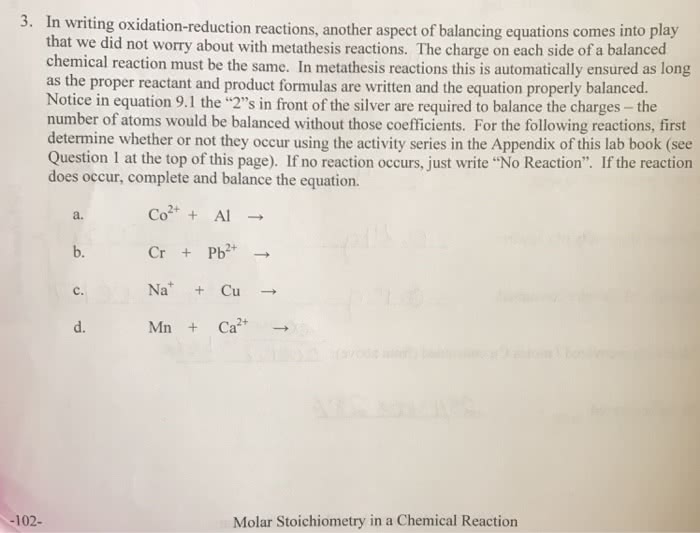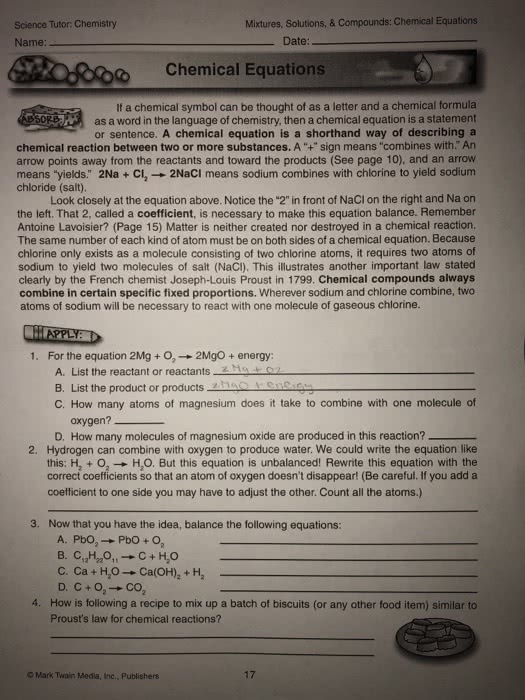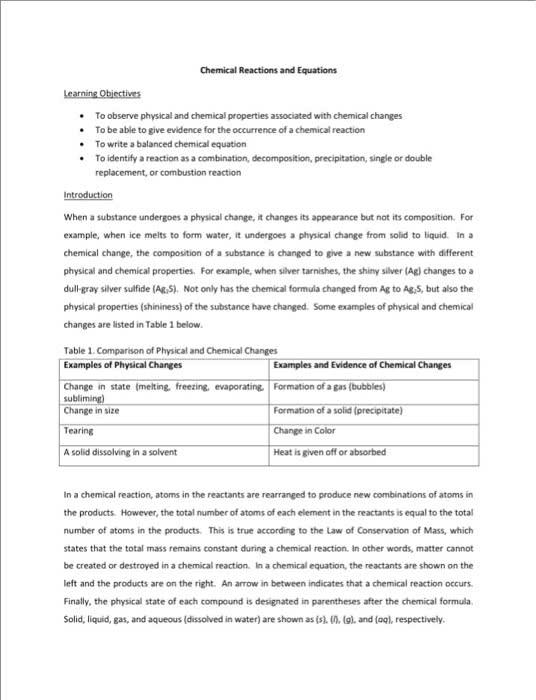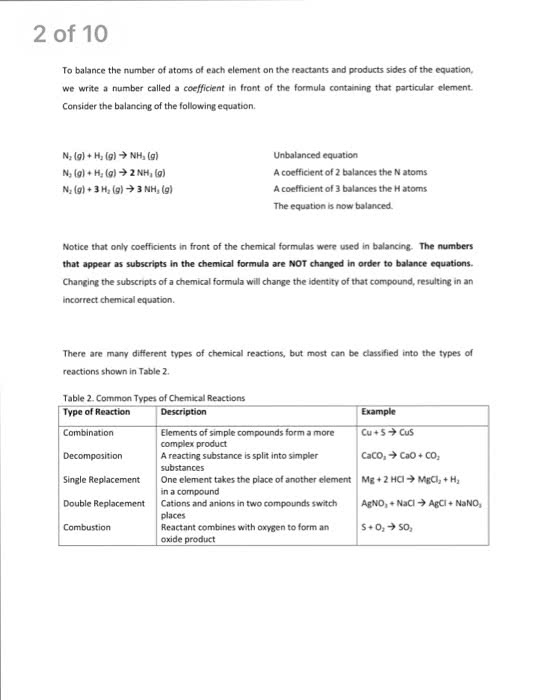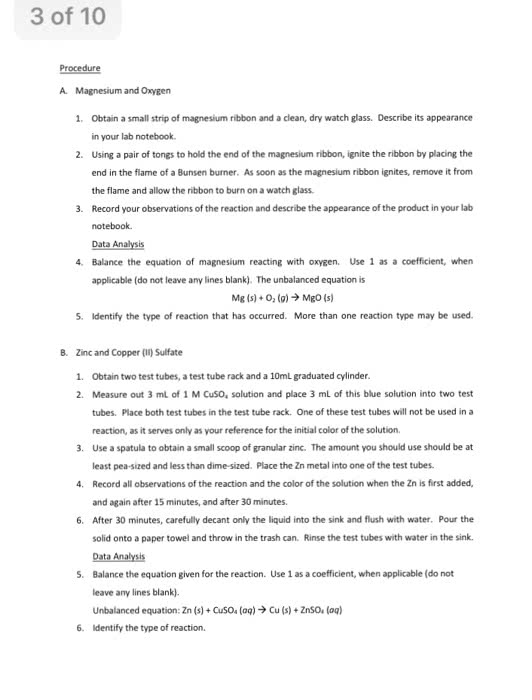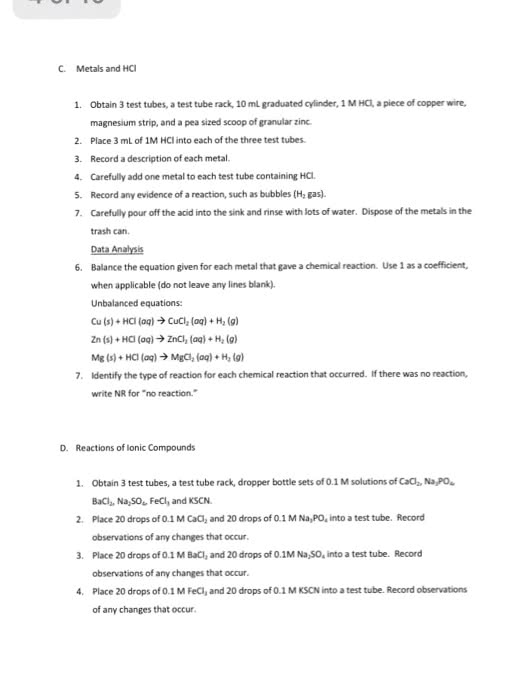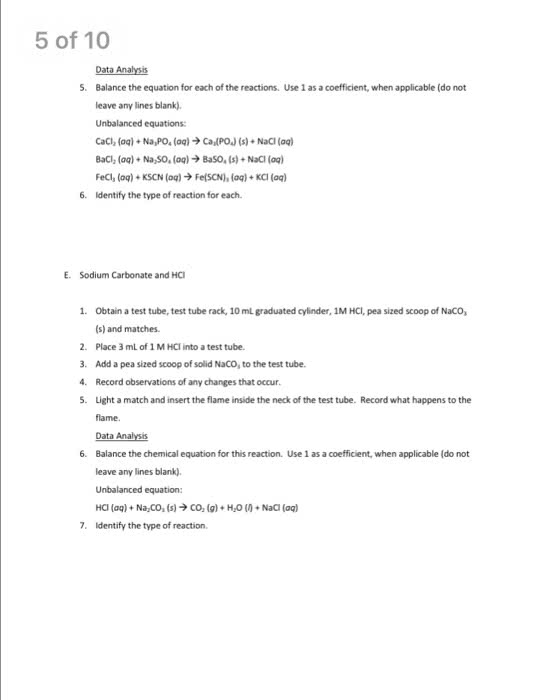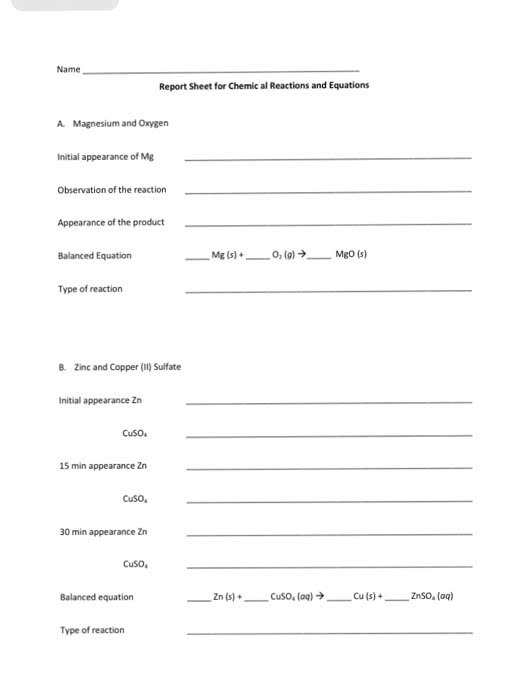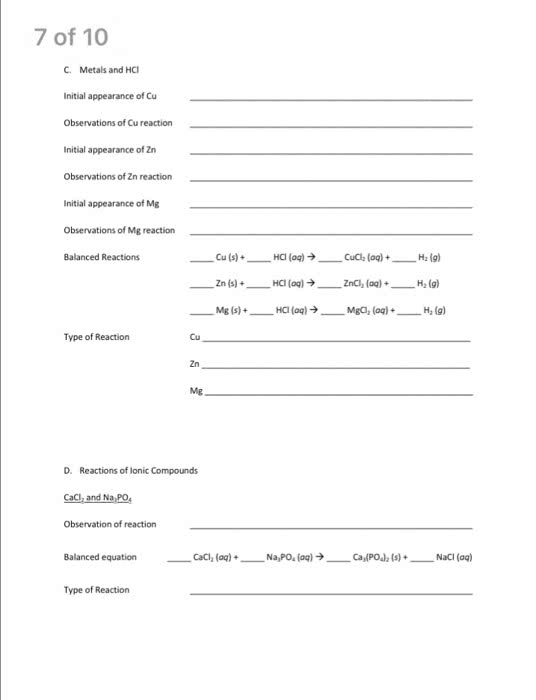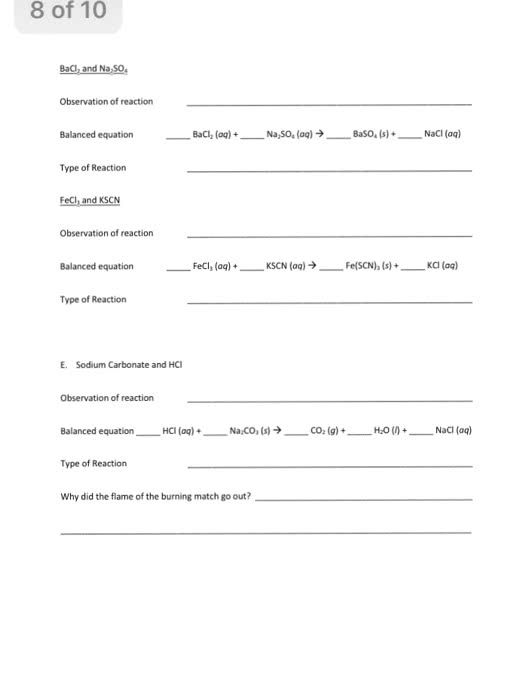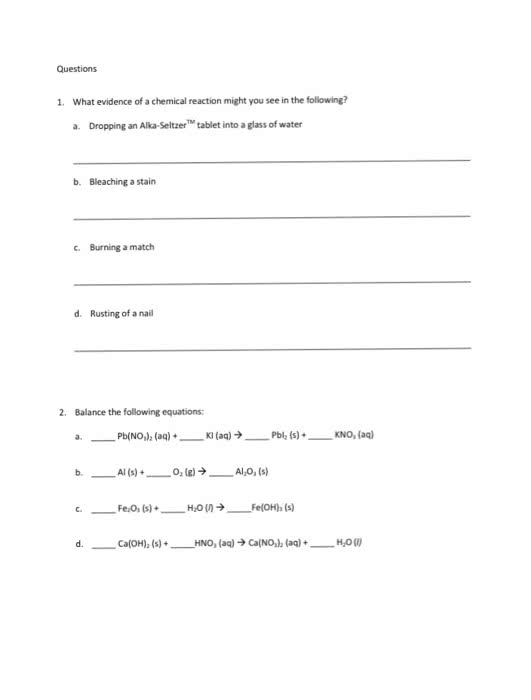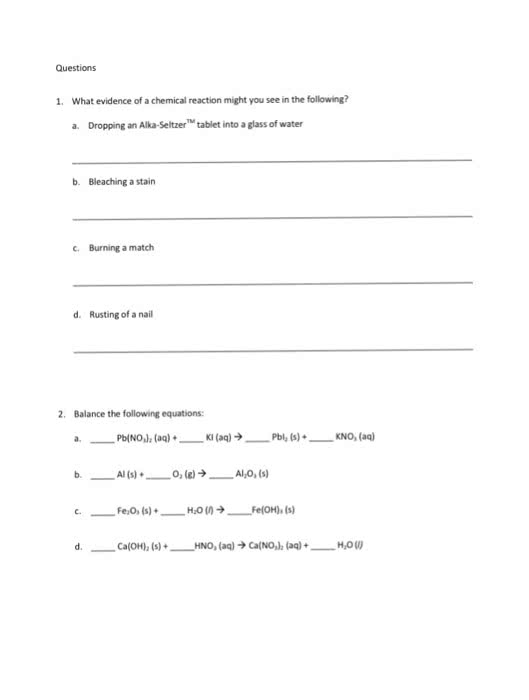CHEM 6A Lecture 9: CHEM W3 Lec 10/20/17

Chapter 3: Law of Conservation of Mass
● In a Chemical Reaction: the number of substances may change and their properties will
change but the total amount of matter remains constant
● Chemical equations must be balanced
● They must have the same number of atoms of the same kind of both sides
● Balancing coefficients
Meaning of Chemical Equations
● 4Al (s) + 3O2(g) → 2Al2O3 (s)
● This equation means:
○ 4 Al atoms + 3 O2 molecules give 2 units of Al2O3
● But it also means:
○ 4 moles of Al + 3 moles of O2 give 2 moles of Al2O3
Writing Chemical Equations
● To write a chemical reaction, you need to know:
1. All reactant and formulas
2. All products and formulas
3. States of reactants and products (g) for gas, (l) for liquid, (s) for solid, (aq) for aqueous
(water) solution
4. Catalysts involved? High temp required?
5. Balancing coefficients identifying the relative amounts of each compound
Balancing Chemical Equations
1. Convert words to formulas
2. Begin to balance atoms: pick compound with most number of atoms and balance
3. Adjust coefficients until all atoms are balanced, may have fractions
4. Make sure all coefficients are integers in the simplest ratio, verify each atom is
balanced
5. Specify state of matter for each compound
E.g. Sodium solid reacts with water to produce aqueous sodium hydroxide and hydrogen gas
● Na (s) + H2O (l) → NaOH (aq) + H2 (g)
○ 1 Na on each side
○ 1 O on each side
○ 2 H on left, 3 H on right
● Na (s) + H2O (l) → NaOH (aq) + (½) H2 (g)
● 2Na (s) + 2H2O (l) → 2NaOH (aq) + H2 (g)


19
CHEM 6A Full Course Notes
Verified Note
19 documents
Document Summary
In a chemical reaction: the number of substances may change and their properties will change but the total amount of matter remains constant. They must have the same number of atoms of the same kind of both sides. 4 al atoms + 3 o2 molecules give 2 units of al2o3. 4 moles of al + 3 moles of o2 give 2 moles of al2o3. High temp required: balancing coefficients identifying the relative amounts of each compound. Sodium solid reacts with water to produce aqueous sodium hydroxide and hydrogen gas. Na (s) + h2o (l) naoh (aq) + h2 (g) 2 h on left, 3 h on right. Na (s) + h2o (l) naoh (aq) + ( ) h2 (g) 2na (s) + 2h2o (l) 2naoh (aq) + h2 (g) E,g, reaction of solid tin and chlorine gas results in a product with tin(iv) ions. Write a balanced equation and name the product (a solid).


